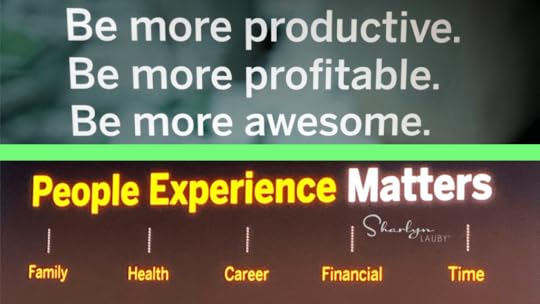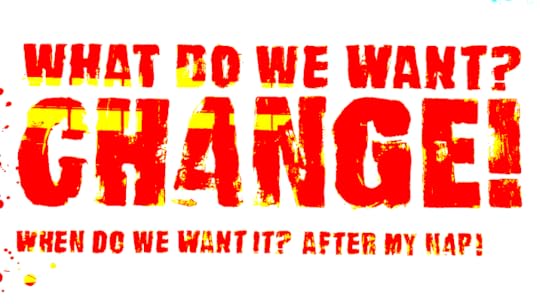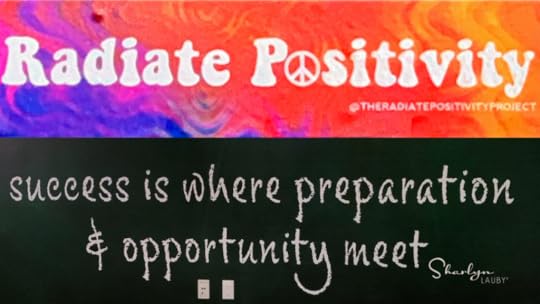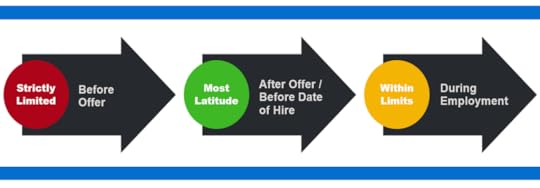Sharlyn J. Lauby's Blog, page 77
September 29, 2020
Performance Management: Design a Modern Process That Creates Results

(Editor’s Note: Today’s article is sponsored by our friends at Primalogik, a cloud-based performance management solution that provides a flexible way to manage employee reviews, 360-degree feedback, goals, and engagement surveys. Enjoy the read!)
While we’re all focused on staying safe and being well, organizations are reopening and resuming their business operations with those same goals in mind. And they’re trying to figure out what their “new normal” looks like. Especially when it comes to their workforce. Many organizations are facing the challenge of managing a hybrid workforce, with significant percentages of both onsite and remote employees for quite some time.
I saw a remote work survey from PwC that said before COVID-19, about 60% of employees were able to work remotely at least one day a week. Post COVID-19, that number is expected to be around 90%. Even if those percentages are a little bit off, the bottom-line is remote work is on the rise. That’s not necessarily a bad thing. It is different, and organizations have to think about updating some of their core employee activities to accommodate this new reality. One of those activities is performance management.
Managing Performance is Evolving
Over the past few years, there’s been an ongoing conversation about performance reviews and the need to update the process. I’ve mentioned before that this only makes sense. Organizations should update their processes to align with the needs of a modern workforce.
That being said, there’s more to performance management than the annual performance review. All the pieces of performance management need to work together to achieve its goal, which is better employee performance. So, even if an organization has recently completed a revamp of the performance review process, it’s possible that they will want to examine performance management again in the context of this new hybrid workplace we’re facing. Here are five performance management activities to consider:
Take performance management online. Some of you might be saying, “Really? Doesn’t everyone have a performance management technology solution?” The answer is “no”.
With managers and employees not always working in the same location, an online option is not only convenient but absolutely necessary. A huge benefit to performance management technology isn’t just accommodating a remote workforce. It also allows for timeliness or performance feedback to happen in real time, which is an essential ingredient to good performance coaching.
Create measurable goals, including stretch goals. While it’s important to talk about the performance that’s already happened, I believe the real value in performance management is goal setting.
Everyone wants goals. Organizations want them because employees with goals help the organization perform better, which allows them to achieve their strategic plans.
Managers want goals for two reasons. 1) It allows them to delegate to the employee confidently. We all know that managers need to be able to effectively delegate to employees, otherwise, they will have to be involved in every process and/or task. This isn’t good for their effectiveness or well-being. 2) If managers aren’t able to delegate, they can’t get themselves or their employees ready for future responsibilities. Because they will always be involved in every little task.
And finally, employees want goals because goal achievement allows them to gain the skills they need to do what they want in their career. Even goals that an employee didn’t “want” or ask for per se can be great for future career development.
Build in a feedback mechanism. This ties into the performance review conversation above. Don’t get me wrong, I’m not against formal performance reviews. They have a place in today’s business environment. However, that doesn’t mean managers and employees should only talk once a year.
Managers and employees should have regular feedback sessions. Organizations often call these one-on-one meetings or designated “office hours”. These feedback sessions should involve a two-way dialogue between the manager and employee. Feedback meetings aren’t just where managers talk, mostly about negative stuff, and the employee listens. The feedback should be positive and constructive on both sides and help the employee perform at a higher level.
Allow multi-rater feedback. The feedback mechanism I mentioned in the last item focuses on the manager-employee relationship. Employees can also receive valuable feedback from peers and other stakeholders. Performance management programs should include a way to capture and share this information.
And please note, the reason I’m calling this section “multi-rater” is because at some point, organizations should build into the model a way for employees to do a self-evaluation. While it’s very effective to receive feedback from others, performance management systems “kick it up a notch” when individuals have self-awareness. They gain that ability through feedback and self-development.
Offer training programs for managers (and employees!) Organizations are all over the spectrum in this area. Some organizations are really good at explaining to managers how the performance review process works and how to complete a performance review. Others have absolutely no process in place. And everything in between. Bottom-line: It totally makes sense for managers to understand and embrace the process.
It’s also equally true that employees should understand the process and how to give/receive feedback. This is a critical component of performance management. Performance management processes should be viewed as a partnership. If the employee doesn’t understand the goal or the process, it’s difficult to achieve successful performance.

Modern Performance Management = Modern Workforce
Performance management is a top priority for organizations because employee performance helps organizations achieve their strategic and financial goals. But let’s face it, over the past few months we’ve all been very forgiving where performance is concerned. I’m sure there have been moments when we’ve all let something slide because of the unprecedented times that we’re experiencing.
Today, I’m here to dish out some tough love. The idea of “letting performance slide” isn’t going to last forever. Employee performance is important and talking about it needs to happen. That means performance management systems need to be modernized to align with our new workplace realities.
If you want to learn more about aligning your performance management process with business strategies, check out Primalogik’s latest ebook, “Essential Performance Management Solutions for Today’s HR”. It’s a great read on the tools that organizations need to keep their performance management aligned with the business.
The post Performance Management: Design a Modern Process That Creates Results appeared first on hr bartender.






September 27, 2020
Aligning HR With the Business – Ask #HR Bartender

Organizations are heavily relying on HR departments right now. Even more than usual. There’s an expectation that we stay on top of the new laws being passed. We need to stay current with employee needs while they’re working remotely. And we want to be a trusted advisor to the senior management team. HR is definitely up for the task but as today’s reader note asks, “How do we make it all happen?”
Hello Sharlyn. Because I’m a big fan of HR Bartender, I would like to ask how HR can add value to the company. I’m a new HR manager and feel I need to please my CEO and management team, even though they appear to be satisfied with my work.
I know the key is alignment. But if you could provide some practical real-life examples, especially for a small-to-medium size company. For example, we have a new finance manager and I know that for him to succeed, HR needs to add value. Any ideas, articles, or business case studies you can share? Appreciate it and thanks.
First of all, a big thank you for the kind words about HR Bartender. You have made my day! I totally agree with you that alignment is key during these times. Your question is a great one. How do HR professionals achieve alignment? Here are a few things to keep in mind.
Know the business. While there are common elements to all businesses, every organization has a different operating philosophy. HR professionals should know how the business operates, who their customers are, and how the business makes money.
Know your audience. What I mean by audience here is know the senior management team. What are their concerns? It could also make sense to understand what their performance evaluations and bonuses are tied to.
Know the employees. All organizations have a mindset where company culture and the employee experience are concerned. In addition, employees have needs and wants that they share during surveys, one-on-one meetings, as well as exit interviews. Know both sides of the conversation.
Know what people expect from human resources. HR professionals should ask their colleagues what they want from HR. It’s possible that managers do not know everything HR can do for them. Be prepared to listen and take notes. Confirm what you can do and explain what you can’t.
Know how to communicate. This ties into number two about knowing your audience. It’s important to understand how people like to receive information, when they’re most responsive, and their preferred format for consuming data.
The answers to the first four tell you what’s important to the organization and the people running it. The last one helps you communicate ideas in a way that will appeal to their interests. Make no mistake, understanding the first four is hard. It takes building relationships. It takes research. And I hate to say it but sometimes it takes pitching ideas, making mistakes, and getting turned down.
There are so many good HR ideas out there. Alignment isn’t just about picking one. HR’s ideas should be things that enhance the business, improve the employee experience, and help senior management accomplish their goals. Alignment is about creating an idea that makes sense for the organization and can be supported by the management team. Then being able to connect the idea with organizational goals.
P.S. If you want to hear more about how HR can “Practice What You Preach”, check out this LinkedIn Live conversation (recorded) hosted by SAP SuccessFactors. I had the chance to talk with Laurie Ruettimann, Minda Harts, and Lars Schmidt about how human experience management (HXM) is essential for creating today’s modern workplace.

Image captured by Sharlyn Lauby at the SAP SuccessFactors 2019 Conference in London, England
The post Aligning HR With the Business – Ask #HR Bartender appeared first on hr bartender.






September 24, 2020
Pilot Groups or Sandboxes: Which Is Better for Your Implementation

It’s always a good idea when we’re creating change or implementing something new to make every attempt to mitigate our mistakes. In software development, many organizations use a process called agile to do that. Agile is when a larger process is broken down into smaller steps or milestones. After each step, the development team debriefs their progress and makes any necessary revisions moving forward.
The idea behind agile is, if we evaluate our work at milestones, then we might mitigate a future mistake. But today’s post isn’t about agile. It’s about implementation and evaluation.
In the learning and development function, instructional designers build in a testing phase to make sure a training session flows the way it was designed. That testing phase is often referred to as a pilot group. The pilot group participants not only attend the training, but they provide design feedback. This allows the instructional design team to make final adjustments before the program goes live to the entire organization.
During last year’s HR Technology Conference, I heard a new term – sandbox environment. My take is that sandboxes are another way to test before going live. Now, I will admit that everything I’ve seen to date on sandboxes is related to software development, but I do wonder if it would be something that we can use outside of it, given that we talk of agile quite successfully outside of software development.
Just in case you’re wondering, the term sandbox comes from the children’s play area. A sandbox simulates the beach or some other locale. Children are able to play and discover – safely – in a smaller version. Software sandboxing does the same thing. It creates a smaller environment that can be used to test the software before it goes live. It does seem to me that pilot groups and sandboxes – while they have the same ultimate goal – are two different things.
Pilot groups present a finished product to a group for feedback. The feedback group is typically composed of part of the audience that the product or program has been designed for. The program may or may not have changes made based on the feedback received.
Sandboxes are traditionally used by the development team. The product isn’t necessarily ready to go live during the sandbox phase. But like the pilot, it does create an opportunity to tweak the product before its finalized.
One thing is certain, whether the organization decides on using pilot groups of sandboxes, they will want to establish the following:
Agree on a common testing protocol. Organizations will get better at testing if they use a consistent process. Testing involves work and the organization doesn’t want to retrain people every time.
Have a testing goal. What type of information is the development team looking for? How will that information help with the overall implementation plan? Everyone needs to agree with this.
Create a baseline for feedback. What I mean here is tell the testing group what the development team wants and how they should send their feedback. Good feedback will help deliver a better outcome.
I can see organizations trying to use a sandbox environment both in place of and in addition to a pilot group. That could be a good thing regardless of the type of implementation the organization is experiencing. These types of testing protocols could be valuable for software development, training programs, or a new organizational initiative. The question becomes which one is the best for your particular implementations.
Image captured by Sharlyn Lauby while exploring the streets of Fort Lauderdale, FL
The post Pilot Groups or Sandboxes: Which Is Better for Your Implementation appeared first on hr bartender.






September 22, 2020
Remote Work: 5 Strategies for Creating Long Term Support

(Editor’s Note: Today’s article is brought to you by our friends at Criteria, a leading provider of pre-employment testing services. To learn more about how pre-employment testing can benefit your talent acquisition strategy, check out Criteria’s “Definitive Guide to Pre-Employment Testing”. I’ve found it to be a comprehensive guide that I keep handy all the time. Enjoy!)
Many people have been predicting that the pandemic will have a lasting impact on remote work. I came across an article the other day that stated prior to COVID-19, about 4% of the total U.S. workforce was working remotely and since, the number has grown tenfold to about 48%. In a study from Global Workplace Analytics, they estimate that remote work will level off to about 25-30% of the workforce at the point that we reach our new normal.
But 25-30% is still significant portion of the workforce. This means that organizations should develop a formal long-term strategy for managing remote employees.
5 Remote Work Considerations
Back when organizations were initially facing the pandemic, I’m sure that they made some decisions quickly and that’s fine. We’re not criticizing. Now, organizations have more time to plan and they should. They can put together a cohesive strategy so the employee and the company can benefit from the remote work arrangement. Here are five things to consider:
Align remote work with office work. Organizations already have policies, procedures, and guidelines in place for how things happen at the office. Do the same for remote work. While remote employees might have flexibility in terms of their time, they still have to be held accountable for delivering results.
For example, one area that will need to be addressed is how remote employees receive training and development. We know how that happens at the office (i.e. classroom sessions, on-the-job training, etc.) How will it happen remotely?
Inventory what remote workers need in terms of equipment. Organizations should have a plan for creating a productive and safe work environment both in the office and remotely. I don’t want to get too off-track here but, workers’ compensation is still a factor for employees who telework. Remote work needs to be safe work. Organizations might need to help remote employees with desks, chairs, etc. to insure they are working in a safe and healthy environment.
It could make some sense to talk with your risk management and legal counsel to discuss best practices for remote employee’s well-being. Let employees know that their safety is important, even when they’re working remotely.
Identify technology needs and expectations. This aligns with the last point regarding equipment. Obviously, remote employees will need technology – both hardware and software. It’s possible they have some technology at home that they can use but it might need an upgrade like an extra monitor. Or an additional software license.
In addition, they need to understand proper data privacy and security. As more employees work remotely, they need to understand proper protocols for accessing company data, printing data, and disposing of data. Maybe the company should make sure remote employees have secure internet access and maybe even a paper shredder for confidential documents. Something to discuss with your IT, legal, and risk management departments.
Train managers on how to support remote work. Managers know how to support employees in a traditional office environment. Remote work could be a new challenge. If managers haven’t been responsible for a remote workforce, it might be helpful to provide them with tips and resources.
In the first point, I mentioned training and development. The reason companies conduct training is to help employees perform better. This can’t get lost as organizations allow more remote work. Managers need to receive training on how to continue to coach and monitor remote employee performance. And give them the tools to reward and recognize remote employee productivity.
Create an agreement. While this initial work from home situation was driven by a pandemic, a long-term remote work strategy will require the manager and employee to agree on performance expectations as well as the consequences of non-performance.

In the prior points, we’ve talked about several things that might be worth mentioning in a remote work agreement – performance expectations, equipment, technology, etc. Another situation to consider is availability. Even when employees work remotely, there might be times when they need to come to the office. It’s important to set the right expectations when it comes to availability.
A Long Term Remote Work Strategy is Good for Everyone
Remote work (aka telework) has been a trend for quite some time. Our current situation might be different because there are organizations (and employees!) that were not considering remote work a few months ago…but now they are.
The organization’s talent goals remain the same. A remote workforce must feel connected to their work and the organization, even when they’re not in the office every day. They need to feel that their manager supports them and that they have a future with the company. All of these things can be accomplished with a well-designed remote work strategy.
P.S. I mentioned learning and development a few times during today’s article. If you want to learn more about how to “Support Remote Employee Learning and Development Using These 5 Strategies”, join me and the Criteria team for a webinar on Thursday, October 1, 2020 at 10a Pacific / 1p Eastern. If you’re not available, I hope you’ll sign up anyway and get the link to the recording. It will be time well spent!
The post Remote Work: 5 Strategies for Creating Long Term Support appeared first on hr bartender.






September 20, 2020
Working In An Unproductive Office – Ask #HR Bartender

Productivity is defined as the effectiveness of effort. It’s usually measured in terms of output per unit of input. The idea being that “productivity” is good when small amounts of input produce large amounts of output (of course, with high quality). Today’s reader note is all about productivity, so it’s important to keep the definition in mind.
I’m searching for an article or some expertise on the subject of disruption in the workplace. I work in an administrative office that’s highly unproductive due to some employees ‘partying it up’ on the company’s time. The workplace has been disrupted to the point that hard work is ridiculed and taking on a productive role leaves you outcast. The office has become so hostile and toxic. If you don’t participate in the so-called camaraderie, you’re outcasted and segregated. Sad.
There’s a lot of subjectivity in this note. I don’t really know if the office is unproductive. And I don’t know the extent of the partying. I also don’t know if the situation can be changed. What I can tell is that this reader is upset. They feel like they are being excluded and that’s not a good thing. Here are a few things to consider when you’re frustrated about something at work.
Can you wait it out? What I mean here is this just a phase that the department is going through or is this going to last an incredibly long time. I’ve seen new managers do a bit more socializing with their teams to build rapport and then back off. Or when teams are working on a big project, they might spend more time together socially and then when the project is wrapping up, they start to spend less. The question becomes can you wait it out until the office partying subsides?
Should you try it out? I’ll be honest. There are times when I’ve gotten the resources I need over drinks during happy hour. I don’t need to participate every time. I don’t need to drink alcohol. And I don’t need to stay all night. But sometimes saying “yes” to coffee or a after work beverage has been helpful. And it’s ultimately helped the productivity of my department. Positive work relationships are built during those casual moments. Does it make any sense to occasionally participate?
Is it time to let it go? If you love your job, should you just ignore all of the shenanigans and focus on your work? It is possible that the senior management of the company notices that you’re productive, even if there are others who aren’t. And maybe they have a plan for dealing with the unproductive ones, you just don’t know about it. At that point, the employee has to ask themselves, “Am I okay with just doing my thing and not worrying about the others?” Only the employee can answer that one.
Are you prepared to leave? I know that most people don’t want to hear this, but if you don’t want to wait, aren’t inclined to participate, and can’t let it go…then there are very few other options left. I’m not saying that you need to waltz into your boss tomorrow and just up and quit but think about what you’re prepared to do (and not do). Maybe one of these other options are worth a try if the only way to gain some workplace peace is leaving.
I understand that right now things are a bit unproductive and unsettling. A few months ago, it was clearly a candidate’s market and organizations were struggling to find talent. Today, the job landscape is different. But I don’t know that when faced with an unpleasant work environment the options you have are different. Take your time, evaluate what’s going on, and be honest about what you’re open to trying. The good news is that you don’t have to make the decision right away so you can make the right decision for yourself and your career.
Image captured by Sharlyn Lauby while exploring the streets of Atlanta, GA
The post Working In An Unproductive Office – Ask #HR Bartender appeared first on hr bartender.






September 17, 2020
Performance Coaching: How to Have an Employee Conversation

Let’s say there’s an employee on your team who isn’t contributing their fair share. The rest of the team can tell this employee is a poor performer. You know you need to address it because if you don’t do something, your credibility will suffer. But what do you say?
The purpose of performance coaching conversations like this isn’t to punish the employee. It’s to change their performance behaviors. That’s why you don’t want to delay the conversation because the employee will think their behavior is acceptable since no one addressed it. The longer you wait, the harder the conversation. Here’s an outline you can use as you plan the performance coaching conversation you want to have with the employee.
Let the employee know your concern. Don’t minimize the importance of this conversation by spending a huge amount of time with small talk about the latest season of “Dead to Me” and a little on the topic of performance. This is an important matter and should be treated that way.
Share what you have observed. Offer specifics about actual behaviors you’ve witnessed. If someone else witnessed the behaviors, try to have that person there. Employees don’t respond well to the line “someone told me you did this…” If you’re trying to change behavior, be able to specifically discuss the behavior.
Explain how their behavior impacts the team. Employees might not realize how their behavior negatively impacts the organization or the team. It’s important to draw a connection between their behavior and impact to the company. If negative impact can’t be explained, then an employee will question why they need to change their behavior.
Tell them the expected behavior. It’s possible that an employee will not know what they should be doing. Come to the discussion prepared to explain what the acceptable performance standard is and how an employee can achieve the standard. If an employee needs refresher training, be prepared to authorize it.
Solicit solutions from the employee on how to fix the situation. This is so important! Let the employee tell you what they’re going to do to fix the situation. It creates buy-in. If you tell an employee what to do, they haven’t bought into it. If necessary, give the employee a short time to think about possible solutions.
Convey the consequences. Let the employee know what will happen if the situation is not resolved. Please notice, I haven’t written one word about disciplinary action. Sometimes the consequence is an employee will not be eligible for a transfer. Or they will not be able to participate in remote work. Maybe the next step is discipline. Regardless, make sure the employee is aware of what happens if the matter isn’t resolved.
Agree upon a follow-up date. No news is good news isn’t a performance management philosophy. After the employee agrees to work toward improving their performance, set a follow-up date to discuss progress.
Express your confidence. Since the goal of this coaching conversation is to improve performance, don’t be afraid to tell an employee you’re confident they can correct the situation. And that you will be there to support them.
None of us likes to have a negative performance conversation. I always try to remember the purpose – it’s to help an employee change their behavior. If the conversation stays focused on helping the employee be successful, then hopefully it never escalates to disciplinary action. And the employee understands that the manager and the company are having this conversation because they want the employee to be successful.
Performance conversations can be a bit scary – both for the person giving them and the person receiving the feedback. Take time to plan out your thoughts. Think of the different responses that could arise during the conversation and how you would answer them. Preparation will make the coaching conversation easier and hopefully, get the results you’re looking for.
Image captured by Sharlyn Lauby while exploring the streets of Las Vegas, NV
The post Performance Coaching: How to Have an Employee Conversation appeared first on hr bartender.






September 15, 2020
Remote Job Search: Candidates and Recruiters Need to Plan Their Video Background

I must admit that I enjoy reading the tweets from an account called Room Rater (aka @ratemyskyperoom). During the pandemic, many journalists who would normally be filming from a TV studio are now reporting from their homes. As such, Room Rater offers tips and some humor about the person’s video background like their choice of furniture, plants, artwork, and bookshelves.
Totally makes sense. I think about what’s in my video background when I’m on a call. Frankly, everyone should.
Especially candidates. I facilitate a talent acquisition program for the Society for Human Resource Management (SHRM) and when we discuss video interviewing … well, OMGosh the stories! If you’re looking for a job and are asked to participate in a video interview, please check what’s behind you! The number of NSFW items in interview backgrounds that I hear about. Wow!
But that also made me wonder if recruiters are thinking about their video backgrounds too. This is an opportunity to show off the culture of the organization. Does your video background during an interview do that?
There was an article in FastCompany recently talking about how candidates are using background props to stand out during video interviews. Whether you’re a candidate or a recruiter, you might want to check out the article. While I know that scrutinizing backgrounds is a good thing, there are some pros/cons to consider as well.
Obviously, there are advantages to your video background showing you’re professional, organized, and well-read. These are qualities that you might mention during the interview and your video background backs it up. The downside is that depending on the background, biases can creep in. What if there’s a book from a controversial author in the background? Or a piece of art that someone might find offensive? And the pros/cons aren’t simply on the candidate side. A recruiter working remotely has to think of the same things.
This whole conversation about what’s in your video background got me thinking. How much do people pay attention to what others have in their video backgrounds? So, I thought it might be interesting to do a quick one-question poll. I hope you’ll take a moment to participate. Your response is complete anonymous.
I’ll share the poll results with you in a couple of weeks. It will be interesting to see the results. And it could be very helpful to people who spend time on video calls. Maybe individuals need to spend more time thinking about their backgrounds? Or maybe they’re spending too much time thinking about it? Thanks, as always for being an HR Bartender reader and offering your feedback!
Video meetings aren’t going away any time soon. They were growing in popularity before the pandemic. But they are slightly different from in-person meetings. Anything we can do to help ourselves get better at it is time well spent.
The post Remote Job Search: Candidates and Recruiters Need to Plan Their Video Background appeared first on hr bartender.






September 13, 2020
Organizations: Create Moments That Matter to Employees

In the past, employers might have shied away from discussing some more personal subjects with employees like health, family, or finances. And we all know the reasons why. Because we don’t want our biases to negatively impact our relationship with the employee. So, we’ve adopted the policy of work is work and home is home and the two shall never meet. The less we know, the better.
However, if the past couple of months have taught us anything, it’s that our work and personal lives are very intertwined. During last year’s SuccessFactors conference in London, one of the themes that speakers talked about was that organizations need to provide moments that matter to employees. The five areas that those moments should cover are (in alpha order):
Family. I must admit that when I decided to alphabetize the list, I’m glad this was first. Whether we’re talking about an employee’s biologically connected family or the group of people who help the employee when they need it, we all have people that are important to us. Organizations need to realize it.
Financial. Not going to lie, money is important. Employees want to feel they are paid fairly for the work they do. They want competitive benefits. Employees also want to work for organizations that think about their future in terms of retirement and offer opportunities for saving.
Career. In addition to money, employees want to work for organizations that invest in their career. It could be by offering training programs. Or through mentoring. And even by receiving feedback from their manager and coworkers about their performance.
Health. Organizations want employees to be healthy. It allows them to do their best work. As a result, organizations need to create wellness and wellbeing programs that encourage employees to be healthy and give them a way to seek the proper attention when they’re not.
Time. While our work and personal lives are very interconnected, it’s important to realize that we need moments when we can shift the balance. There will be times when we’re asked to make work the priority. Employees also want moments when their personal lives are the priority.
In addition to creating moments that matter, organizations need to focus on how those moments are delivered. We’ve become a very “instant” society. We’re used to doing things right away and getting immediate results. For example, we can check the news on our phone, order food online, and chat with our friends from anywhere around the world at any time. Employees also want this instant component in their work lives, and they expect organizations to deliver it.
What does this have to do with moments that matter? Well, the more time we spend focused on delivering moments that matter, the better the employee experience. Organizations will want to keep creating moments that matter as they think about the type of candidate and employee experience they want to create. The goal is to align moments that matter with expectations.
For instance, is it possible that we create a disconnect when we meet people in-person during a career fair or a college recruiting trip and then tell them the only way we can consider them for a job is for them to apply online? Then when we tell someone to apply online, instead of accepting a link to their online profile or social resume, we require a candidate to upload their resume, which is what they were trying to give us in the first place. Oh, and I get it, we want all the information to be in the applicant tracking system (ATS). We want the system to scan the information for keywords, etc. But there’s got to be a better way to connect the process.
Employees want moments that matter in their workplace. I’m not sure that their motivations, values, and purpose have changed. But with today’s technology, expectations have. Organizations need to deliver.
P.S. SuccessFactors is holding a virtual event on Tuesday, October 6, 2020. It’s a free event where you can learn more about HR technologies as well as Human Experience Management (HXM). I’m planning to listen in and hope you will join the conversation. Registration details can be found on the SAP SuccessFactors website.
Image captured by Sharlyn Lauby while exploring the streets of Tampa, FL
The post Organizations: Create Moments That Matter to Employees appeared first on hr bartender.






September 10, 2020
Organizations Cannot Forget About Employee Stress and Burnout

(Editor’s Note: Today’s article is brought to you by our friends at Kronos, a leading provider of workforce management and human capital management cloud solutions. Kronos has introduced employee contact-tracing capabilities for their customers at no additional charge. Check out their COVID-19 Resource Center for details. Enjoy the article!)
One of my Facebook friends recently pondered the question, “I don’t think we fully know how much this pandemic is going to change our way of life.” It’s so true. And it’s a good reminder that we don’t know everything that people are dealing with right now. For example, employees are facing huge demands trying to juggle work, home, and in some cases, childcare.
In a recent survey from The Workforce Institute at Kronos Incorporated, 72% of U.S. employees with children under 18 are anxious about balancing the demands of their job with childcare – including school re-openings, remote learning, and daycare capacity. The survey also found that employees without children may need more encouragement to take time-off to mentally and physically rest and recharge. Only a third (37%) have done so since the start of COVID-19, potentially putting them at risk of burning out.
We can’t ignore the fact that organizations have been dealing with employee stress and burnout for years. COVID-19 is adding a new dimension to an existing challenge. Here are a few articles about workplace stress and burnout from The Workforce Institute blog. I like that they not only talk about the causes but offer some solutions for organizations to consider.
Employee Burnout – Are You There Yet?
In a joint study with Future Workplace, 95% of HR leaders said that employee burnout is sabotaging their workforce. The study also indicated that nearly half of those surveyed attribute up to 50% of their employee turnover to employee burnout.
Kevin Mulcahy, a partner at Future Workplace, says proactively tackling employee burnout will have a big impact on improving retention, and that should be a top priority for organizations. “As the economy continues to improve, the battle for talent will continue to heat up, requiring organizations to provide more compensation, expanded benefits, and a richer employee experience. Managers should pay close attention to make sure employees aren’t overworked while also promoting flexibility wherever possible.”
Harnessing Human Potential and Supporting Wellbeing in an “Always-on” World
In the last 15 years, knowledge working has changed enormously. Thanks to cheaper technology along with the ubiquity of wireless networks and social media, we are ‘always on’, that is, we exist in a state of being constantly connected, available and digitally present. In some ways this is wonderful. From the point of view of the employee, we can flex our time by starting work early or finishing late. But in other ways, ‘always-on’ can be a con: we work longer hours, feel the need to reply to messages and voicemails as soon as possible, and we suffer from FOMO: the fear of missing out.
The same conundrum applies to employers. We urgently need to consider how we get the best out of people, but we have to make sure that we treat them sympathetically and not as assets to be sweated. We need to think about time as a precious commodity and the ways in which we all use it. And finally, we need to think about technology as a resource that we consume with full respect for employees.
Gen Z Mental Health During Quarantine
According to the recent Kronos “Meet Gen Z survey”, 34% of Gen Zers communicated anxiety as an emotional barrier that they must overcome to achieve workplace success, along with lack of motivation/drive (20%), and low self-esteem (17%). Dennis Miller, vice president of human resources at The Claremont Colleges suggests that in light of COVID-19, this group may not fully understand that we will get through this crisis, even though no one can say for sure when, or how.
As leaders and managers, it is essential to pay special attention to the emotional and mental health impact this pandemic has had on our employees, at all levels of the organization, and remember that no one is immune to the impact of this crisis. Today, the leadership mission is focusing on the emotional and mental welfare of your people more than anything else.
Protecting Millennials from Burnout and Improving Communication in the Era of “Always-on”
Trends such as digitalization, automatization, and the proliferation of technology require increasingly qualified workers. Companies need to understand that their human capital is their most important investment: from employee attraction, to recruiting, retention and development.
Figures regarding millennials’ mental health indicate that more and more young professionals are in danger of suffering from emotional exhaustion. The main causes for this exhaustion are the growing convergence of work and leisure time, and the misuse of modern technologies. Organizations need to understand the specific needs of millennials in the workplace and design a sustainable corporate health care plan with an increasing emphasis on mental health.
Employee Self-Care: 10 Ways Organizations Can Be Supportive
Self-care is any activity we deliberately do in order to take care of our mental, emotional, and physical health. In theory, when we say that we ‘take care of ourselves’, we’re practicing self-care. The challenge with self-care is identifying the best ways to care for ourselves.
Now, you might be saying to yourself, “What does this have to do with employees?” The answer is … a lot. It’s hard for employees to be engaged if they’re not healthy. It’s difficult for employees to be productive if they’re not healthy. Disengaged and unproductive employees hurt the bottom-line. Even if the company doesn’t have a formal wellness or well-being program, it makes sense for employers to support the idea of self-care. This article offers a few things companies can do to support employee self-care without spending extra money or creating a special program.
I don’t have to explain to anyone that we’re still in the middle of a pandemic. Employees are experiencing burnout and stress. Managers are experiencing stress. HR leaders are stressed too. Organizations need to encourage and support the development of programs that are going to help employees manage the stressors. They need to encourage conversations and feedback so little annoyances don’t become huge obstacles. And they need to make sure that technology is used for the right reasons and doesn’t become something employees want to avoid.

It’s a tall list for sure. But even when COVID-19 is past us, these issues will remain. Don’t push them off. They’re a part of what it takes to be successful.
Image captured by Sharlyn Lauby at KronosWorks.
The post Organizations Cannot Forget About Employee Stress and Burnout appeared first on hr bartender.






September 8, 2020
Travel During COVID-19: Employer and Employee Obligations

The Centers for Disease Control (CDC) recently announced that travelers do not have to self-quarantine after traveling from another state. However, state governments are still mandating that visitors from certain states will be required to self-quarantine upon arrival.
As we emerge from the pandemic, travel is going to be a part of our plans. And that includes business travel. I wanted to write about it and give you some food for thought. There are some scenarios that I could easily see happening.
So, I reached out to my friend and attorney Carrie Cherveny to see if she would offer us some insights. Carrie is senior vice president of strategic client solutions in HUB International’s risk services division. In her role, Carrie works closely with clients to identify compliance risks across the organization and develop responsive strategies that ensure compliance and further overall organization goals, including risk mitigation when it comes to various insurances such as health and welfare programs and employment practices liability.
Carrie has helped us before with COVID-19 information. Her comments on employer communications is worth a read. Please don’t forget that Carrie’s comments shouldn’t be construed as legal advice or as pertaining to any specific factual situations. If you have detailed questions, they should be addressed directly with your friendly neighborhood labor and employment attorney.
For this article, I asked Carrie to comment on four different travel-related scenarios that I could see happening in the workplace. Of course, we know these scenarios are never as clear as I’ve outlined. There’s always some mitigating factor. But I think it’s a good place for us to have a high-level discussion about COVID-related communication, so employers and employees start thinking about it.
Carrie, before we dive into the scenarios. Is there any HR information we need to keep top of mind?
[Cherveny] Yes, let’s start with some foundational and relevant legal obligations and limitations. The Americans with Disabilities Act (ADA) regulates the medical information that an employer may seek from an employee. The scope of an employer’s allowable access to employee medical information is largely dependent on the phase of the employment relationship:

Before a conditional offer of employment: The ADA prohibits employers from making disability-related inquiries and conducting medical examinations of applicants before a conditional offer of employment is made.After a conditional offer of employment, but before an individual begins working: The ADA permits employers to make disability-related inquiries and conduct medical examinations if all entering employees in the same job category are subject to the same inquiries and examinations.During employment: The ADA prohibits employee disability-related inquiries or medical examinations unlessthey arejob-related and consistent with business necessity. Generally, a disability-related inquiry or medical examination of an employee is job-related and consistent with business necessity when an employer has a reasonable belief, based on objective evidence, that an employee’s ability to perform essential job functions will be impaired by a medical condition; or an employee will pose a direct threat due to a medical condition.This reasonable belief “must be based on objective evidence obtained, or reasonably available to the employer, prior to making a disability-related inquiry or requiring a medical examination.“
Similarly, the Genetic Information Nondiscrimination Act (GINA) prohibits medical inquiries regarding an employee’s family member.

Additionally, employers are legally required to provide a safe working environment for employees. Specifically, the Occupational Safety and Health Act (OSHA) General Duty Clause requires that each employer shall: A) Furnish to each employee, employment and a place of employment which are free from recognized hazards that are causing or are likely to cause death or serious physical harm to his employees; and B) Comply with occupational safety and health standards promulgated under the Act. Each employer must comply with occupational safety and health standards pursuant to the General Duty Clause which are applicable to the employee’s own actions and conduct.
It’s against this backdrop that we can proceed with the scenarios.
While the states will differ for every reader, let’s use me as an example. I live in Florida. But according to the State of New York’s COVID-19 Travel website, if I want to visit New York, then I must quarantine for 14 days. So, for Scenario #1: If I decide to go to New York on vacation and I’m planning to be gone for three weeks, so the quarantine issue in New York isn’t a problem. Do I need to tell my employer that I’m going to New York?
[Cherveny] An employer’s employee-related inquiries are primarily limited by the ADA and GINA (as described above). This means that there are not any federal laws that prohibit an employer from asking its employees about their travel. Therefore, the employee’s ‘obligation’ to tell their employer about their travel, and any other activities that may be considered at high-risk for exposure is largely driven by the employer’s policies. Employers may ask employees to self-report regarding travel and other potential COVID-exposure activities.
Arguably, the employer’s obligation to provide a safe working environment would necessitate its inquiries into an employee’s activities in response to the direct threat of COVID-19 community spread. For example, the CDC recommends that employers conduct daily COVID-19 employee symptom screening. It may be prudent for an employer to include questions regarding travel and other potential exposure-activity.
Let’s add a layer of challenge to the second scenario. In Scenario #2: What if Florida were to require travelers from the New York – New Jersey – Connecticut area to quarantine. Now, do I have to tell my employer that I went to New York? And is my employer required to provide any type of accommodation since it was vacation (and not work-related)?
[Cherveny] Let’s start with the state directive. The state’s requirement to self-quarantine after travel to a hot-spot (such as NY/NJ/CT) would require the employee to remain at home for 14-days after travel. State quarantine directives rarely require the employee to specifically report their travel to the employer. However, the practical reality is that the employee will not be able to go to work and will have to offer an explanation to the employer. Likewise, the employer may (and likely should) establish employee obligations to report travel to hotspots through their own policies and processes.
An employer’s obligation to provide a reasonable accommodation to an employee is triggered by an ADA qualifying medical condition. Here, we don’t have an employee requiring an accommodation to perform their essential functions of the job because of a medical condition. Instead, the employee is required to remain in quarantine because of a government order or recommendation. Therefore, instead of a reasonable accommodation under the ADA, the employee may be eligible for wage replacement benefits under the Emergency Sick Leave Act. (also known as the Families First Coronavirus Response Act or FFCRA). The employee’s eligibility is largely dependent on the exact wording of the state’s quarantine directive.
The paid sick leave and expanded family and medical leave provisions of the FFCRA apply to certain public employers, and private employers with fewer than 500 employees. Generally, the Act provides that employees of covered employers with up to 80 hours of paid sick leave at the employee’s regular rate of pay up to $511 each day and $5,110 in the aggregate (over a 2-week period). The employee is eligible for these benefits if they are unable to work because the employee is quarantined (pursuant to Federal, State, or local government order or advice of a health care provider) (among other qualified reasons). A full-time employee is eligible for 80 hours of leave, and a part-time employee is eligible for the number of hours of leave that the employee works on average over a two-week period.
For Scenario #3 I’d like to make one little change to the second scenario. I’m still traveling to New York and returning to Florida, but my trip is due to a sick family member (not vacation). Does that change anything – like does the Family and Medical Leave Act (FMLA) or FFCRA apply?
[Cherveny] Here’s the good lawyer answer – ‘it depends’. With respect to the good-old-fashioned FMLA for the serious health condition of a family member: do you work for an employer with 50 or more employees in a 50-mile radius? Have you been employed for 12 months and at least 1,250 hours in the 12-month prior to the FMLA? If yes to all of the above, the next question is with respect to the family member’s condition. The employer will likely provide you with a Certificate of Healthcare Provider for Employee Family Member’s Serious Health Condition. Once the employer receives the completed certificate of health care provider it will be able to determine whether you are eligible for FMLA. ‘Traditional’ FMLA provides up to 12-weeks of job and health insurance protections but it is an unpaid program.
Next, let’s look at the FFCRA. Do you work for an employer with less than 500 employees? The Emergency Paid Sick Leave provides up to 80 hours of paid sick leave at two-thirds the employee’s regular rate of pay because the employee is unable to work because of a bona fide need to care for an individual subject to quarantine (pursuant to Federal, State, or local government order or advice of a health care provider).
Last question and it’s a multi-parter. In Scenario #4, my employer asks me to travel to New York for work. Is the company obligated to tell me that I’m going someplace where I have to quarantine? If so, do I have to go? And if I say no, am I protected from retaliation?
[Cherveny] The first part of this question (regarding communications) is a very complicated situation. Employers will want to confer with their legal counsel to create a communication policy that is in compliance with the specifics of their industry OSHA standards. While the OSHA General Duty Clause does not have a specific notice provision or requirement, an employer would likely have a difficult time ensuring the health and safety of its employees without informing them of the 1) COVID-19 conditions (i.e. the hotspot status); and 2) the required safety protocols by the company. Likewise, the employer will likely have to inform the employee of his or her obligations to self-quarantine and will have to prohibit the employee from visiting the local offices/clients (on either/both ends of the trip depending on which end requires quarantine) until satisfaction of the quarantine period.
Regarding the second part of the question (regarding retaliation), in April 2020, the Department of Labor (DOL) issued a press-release ‘Reminding Employers that They Cannot Retaliate Against Workers Reporting Unsafe Conditions During Coronavirus Pandemic’. In this press release, the DOL reminds employers that employees have a right to work in a safe and healthy workplace. The DOL instructs employees:
If you believe working conditions are unsafe or unhealthful, you may file a confidential complaint with OSHA and ask for an inspection. If possible, tell your employer about your concerns.
The DOL also explains that employees have a right to file whistleblower complaints and provides the contact information for OSHA. The DOL also further states:
It is illegal for an employer to fire, demote, transfer or otherwise retaliate against a worker who complains to OSHA and uses their legal rights.
It’s against this backdrop and emphasis on whistleblower protections that we answer this question with a resounding ‘Yes!’. In fact, as of August 13, 2020 the DOL has received 2,540 whistleblower complaints.
It’s for these reasons that we continue to instruct employers to take all safety concerns and complaints seriously. Employees that express safety concerns may have a misperception of the workplace safety programs – this creates an opportunity to correct their understanding and reinforce your safety rules and programs. Additionally, employees with safety concerns may have underlying protected reasons for their concern. The Equal Employment Opportunity Commission (EEOC) specifically instructs employers in their March webinar to take employee’s concerns seriously and try to better understand the reasons. If the employee, for example, has an underlying health condition the employer may need to address the Americans with Disabilities Act.
I want to extend a huge thanks to Carrie for sharing her knowledge with us. If you’re looking for additional resources, be sure to check out HUB International’s COVID-19 FAQ. This is a 200+ question FAQ updated each week to consolidate the ever-changing and updated regulatory information across all aspects of employment including benefits, health and safety, and employee relations. I also found this article Fast Company article on COVID-19 travel maps to be very interesting.
I realize this article was longer than a usual HR Bartender read, but I hope you found it interesting. I know everyone wants life to return to normal. That includes traveling. But taking a trip across state lines is complicated – for both the employee and the employer. I hope this article offered some perspective into the best way to craft a policy and communicate expectations.
Image captured by Sharlyn Lauby at the Orlando International Airport in Orlando, FL
The post Travel During COVID-19: Employer and Employee Obligations appeared first on hr bartender.






Sharlyn J. Lauby's Blog
- Sharlyn J. Lauby's profile
- 10 followers



